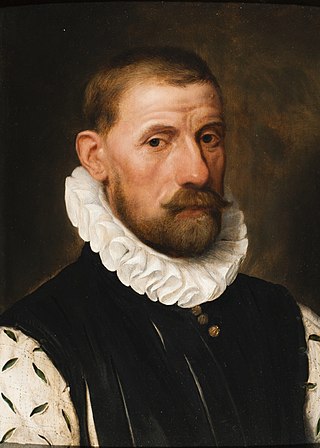| |||||
| Decades: | |||||
|---|---|---|---|---|---|
| See also: | Other events of 1517 History of France • Timeline • Years | ||||
Events from the year 1517 in France
| |||||
| Decades: | |||||
|---|---|---|---|---|---|
| See also: | Other events of 1517 History of France • Timeline • Years | ||||
Events from the year 1517 in France

The 1510s decade ran from January 1, 1510, to December 31, 1519.

Franche-Comté is a cultural and historical region of eastern France. It is composed of the modern departments of Doubs, Jura, Haute-Saône and the Territoire de Belfort. In 2021, its population was 1,179,601.

Year 1518 (MDXVIII) was a common year starting on Friday of the Julian calendar. Within much of Christian Europe, New Year's Day was celebrated on January 1, the rule in the Roman Empire since 45 BC, and in 1518, the year ran from January 1, 1518 to December 31, 1518. In England and Scandinavia, the year ran from the Feast of the Annunciation to March 24, 1519; and in France from Easter Sunday to April 23, 1519. For instance, the will of Leonardo da Vinci, drafted in Amboise on 23 April 1519, shows the legend "Given on the 23rd of April 1518, before Easter".* See Wikisource "1911 Encyclopædia Britannica/Easter".

Year 1517 (MDXVII) was a common year starting on Thursday of the Julian calendar.

Rouen is a city on the River Seine, in northwestern France. It is the prefecture of the region of Normandy and the department of Seine-Maritime. Formerly one of the largest and most prosperous cities of medieval Europe, the population of the metropolitan area is 702,945 (2018). People from Rouen are known as Rouennais.

Lamoral, Count of Egmont, Prince of Gavere was a general and statesman in the Spanish Netherlands just before the start of the Eighty Years' War, whose execution helped spark the national uprising that eventually led to the independence of the Netherlands.

Antoine Perrenot de Granvelle, Comte de La Baume Saint Amour, was a Burgundian statesman, made a cardinal, who followed his father as a leading minister of the Spanish Habsburgs, and was one of the most influential European politicians during the time which immediately followed the appearance of Protestantism in Europe; "the dominating Imperial statesman of the whole century". He was also a notable art collector, the "greatest private collector of his time, the friend and patron of Titian and Leoni and many other artists".

Jean de Lorraine was the third son of the ruling Duke of Lorraine, and a French cardinal, who was archbishop of Reims (1532–1538), Lyon (1537–1539), and Narbonne (1524–1550), bishop of Metz, and Administrator of the dioceses of Toul, Verdun, Thérouanne, Luçon, Albi, Valence, Nantes and Agen (1538–1550). He was a personal friend, companion, and advisor of King Francis I of France. Jean de Lorraine was the richest prelate in the reign of Francis I, as well as the most flagrant pluralist. He is one of several cardinals known as the Cardinal de Lorraine.

The Archdiocese of Besançon is a Latin Church ecclesiastical territory or archdiocese of the Catholic Church in France. It comprises the département of Doubs and the département of Haute-Saône.

François de Tournon was a French Augustinian friar, an archbishop, diplomat, courtier, and cardinal. From 1536 he was also a military supply officer of French forces operating in Provence, Savoy and Piedmont. In the same year he founded the Collège de Tournon. For a period he was effectively France's foreign minister. He was a prominent leader in the fight against Lutheranism and Calvinism, especially at the French Royal Court, and what he perceived as the growing Huguenot menace to both doctrinal orthodoxy and the social order. He took a prominent role in the Estates General of 1560, the Colloquy of Poissy and the Colloquy of Saint-Germain in 1562. He participated in the papal conclaves of 1534, 1549, and 1559.

The Diocese of Arras (–Boulogne–Saint-Omer) is a Latin Church diocese of the Catholic Church in France. The episcopal see is the Arras Cathedral, in the city of Arras. The diocese encompasses all of the Department of Pas-de-Calais, in the Region of Hauts-de-France.

Ornans is a commune in the Doubs department in the Bourgogne-Franche-Comté region in eastern France. On 1 January 2016 the former commune Bonnevaux-le-Prieuré was merged into Ornans.

Nicolas Perrenot de Granvelle (1486–1550) was a Burgundian politician who served as a close trusted adviser to Emperor Charles V. He was made suzerain of the imperial city of Besançon and held an influential position in the Netherlands. From 1530 until his death he was one of the emperor's most trusted advisers in Germany. He was the father of the cardinal and politician Antoine Perrenot de Granvelle, also a leading Habsburg minister, and built the Palace Granvelle in Besançon.
Jean or Jehan Scheyfve, Lord of Sint-Agatha-Rode, was Chancellor of Brabant, head of the civilian administration of the Duchy of Brabant, from 1557 to 1579. He had earlier served as the ambassador of Charles V, Holy Roman Emperor, to the English court.

Events from the year 1555 in France.

The House of Granvelle is a protected French Historical Monument located in the village of Ornans, in the French department of Doubs.
Events from the year 1624 in France.

Cardinal de Granvelle's Dwarf or Cardinal de Gravelle's Dwarf Holding a Large Dog is a c.1560 oil on panel painting by Antonis Mor. It shows a person with dwarfism in the household of Antoine Perrenot de Granvelle, resting one hand on a dog and holding a sceptre in another. It formed part of superintendent Nicolas Fouquet's collection before being seized from him by Louis XIV and is now in the Louvre Museum.

The Granvelle Palace was a 16th-century Renaissance palace in Brussels, Belgium. It was originally built for Cardinal Archbishop Antoine Perrenot de Granvelle and was located in the former Putterie/Putterij district, between the Rue des Sols/Stuiversstraat and the Rue de l'Impératrice/Keizerinstraat, near today's Brussels-Central railway station.
Events from the year 1518 in France